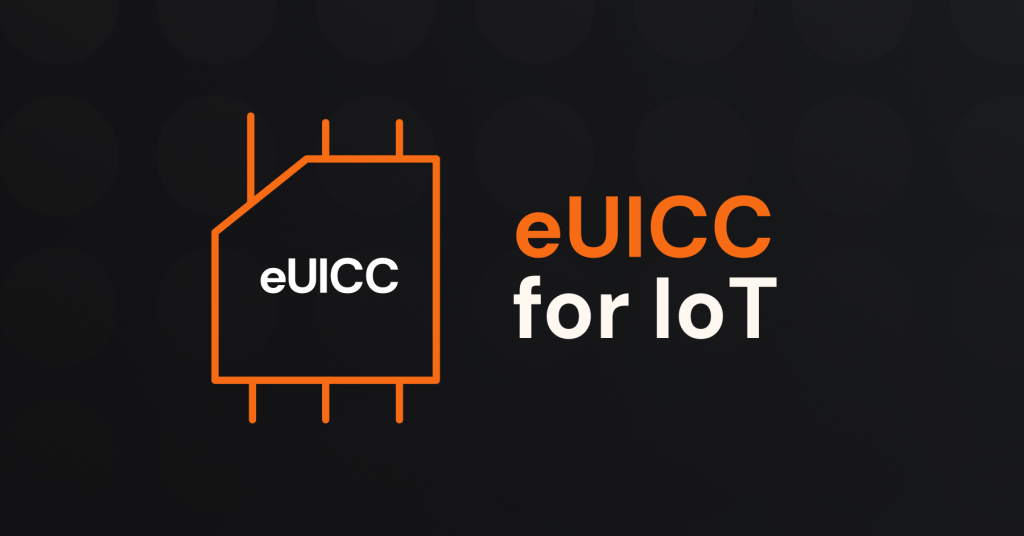When choosing cellular connectivity for your device, you’ll need a Subscriber Identification Module (aka SIM). It’s the SIM that gives your device access to a cellular network.
Not all SIMs are created the same. Some SIMs are more durable than others (industrial vs consumer SIMs), some SIMs can store multiple operator profiles while others can only store one, and SIMs also come in different sizes.
You’ll also find many IoT SIM providers on the market purporting to offer features like the best global connectivity, the best pricing, and the best platform.
This article guides you through some important things to think about when looking for the best IoT SIM provider and connectivity platform for your use case.
Table of Contents
IoT SIM card form factors
SIM cards come in several different standard sizes, or form factors:

- Full-Size (FF1).
- Mini-SIM (FF2).
- Micro-SIM (FF3).
- Nano-SIM (FF4).
- Embedded SIM (MFF2, previously referred to as VQFN-8).
It’s important to note here that radio modules in post-2018 devices can utilize software SIMs (aka SoftSIMs). This evolution requires no SIM hardware; the SIM functionality is purely virtual, and is a new and exciting category of SIM form factor.
You can read more on SoftSIMs and how they fit into the SIM landscape in this article from GSMA, an industry body that creates standards and aims to unify the mobile ecosystem: Understanding SIM evolution (PDF).
Reduce your device’s bill of materials, simplify production, and reduce power consumption; it’s time for you to learn more about Onomondo’s 100% software SIM.
Traditional IoT SIM cards vs eSIMs
Traditional SIMs are carrier-specific and only have one profile (e.g., Vodafone, T-Mobile, or Orange). Therefore, if you want to change carriers to access different prices, new technologies, or new markets, you also have to replace the SIM.
eSIMs were introduced to take away the pain of one-profile SIM cards.
At its core, eSIM is a way to remotely provision carrier profiles on IoT devices. As a result, there’s no need to manually swap SIMs when changing carriers, something that would be incredibly impractical for IoT devices deployed at scale, globally.
However, it’s important to understand that people use the term eSIM to describe two related but separate concepts in the industry.
- Embedded SIM form factor: eSIM means embedded SIM, a non-removable SIM card form factor that can be mounted (soldered) directly onto the surface of a circuit board.
- eUICC software on SIMs: eSIM is also used to describe the eUICC (Embedded Universal Integrated Circuit Card) architecture that allows a SIM to have multiple network profiles.
While GSMA defines eSIM as the eUICC architecture, it’s often bundled with the embedded SIM chip when marketed to the IoT industry.
Sadly, these two ideas are often confused with each other. However, the SIM chip form factor (hardware) and eUICC architecture (software) are independent properties when selecting your IoT connectivity.
Read more about eSIMs: What are eSIMs? And when to use them for IoT in 2022.
Pricing for IoT SIM cards
You may have noticed that IoT SIMs are not priced the same as everyday SIMs. The advertised consumer SIMs are cheaper per MB/GB than IoT/M2M SIM cards. This is mainly because Mobile Network Operators (aka MNOs, mobile network carriers, or wireless carriers), such as Vodafone, Telenor, and T-Mobile, know that consumers don’t get anywhere near their data limits on average and adjust their pricing model accordingly.
For instance, the average user in the OECD uses about 5.8 GB per subscription per month. Even if a few people use all of their 100 GB per month, the operator still makes money on average.
On the other hand, B2B IoT SIM users clearly understand how much data they use and prefer pricing based on actual data usage. But this is not normally the case. You’ll find the vast majority of IoT SIM card operators offer subscription based pricing with limitations on which networks you can access and data pooling.
This is a consequence of how databases are set up in the telco industry and commercial decisions by operators.
Data subscriptions for IoT are the cause of many limitations on the expansion of IoT solutions:
- Once activated, SIM cards start costing money. Meaning, perfectly timing SIM activation and avoiding time-on-shelf after testing are paramount.
- Many operators have created workarounds that involve manual activation and deactivation of SIMs, Zapier integrations, or special pricing plans for post production testing, which require a switch once in the hands of the end-user. This adds up to time and reources spent managing SIMs.
- Forecasting becomes a big part of planning when SIM card pricing is based on regional pricing baked into the SIM, which is often the case.
We believe the ideal model for IoT SIM data pricing is to pay for what you use. If you only pay for data when you use data and aren’t penalized with active SIM fees or other data subscription limitations, then value creation and data costs are inextricably linked, making scaling IoT much much easier.
Avoid custom code on IoT SIM cards
Many IoT SIM providers put proprietary code on their SIM cards. For example, some SIMs have Multi-IMSI applets, a custom code that helps the SIM jump between operators depending on where the device is located.
One issue with custom code is that it isn’t GSMA compliant, meaning SIMs may not work on some devices.
Custom code locks businesses into using one SIM operator, in most cases. If you want to change operators, you’ll need to revisit the device after deployment to switch the SIM. But revisiting devices isn’t financially viable, practical, or possible for most use cases. You can read more about changing the operator credentials on a SIM over the air in the next section.






